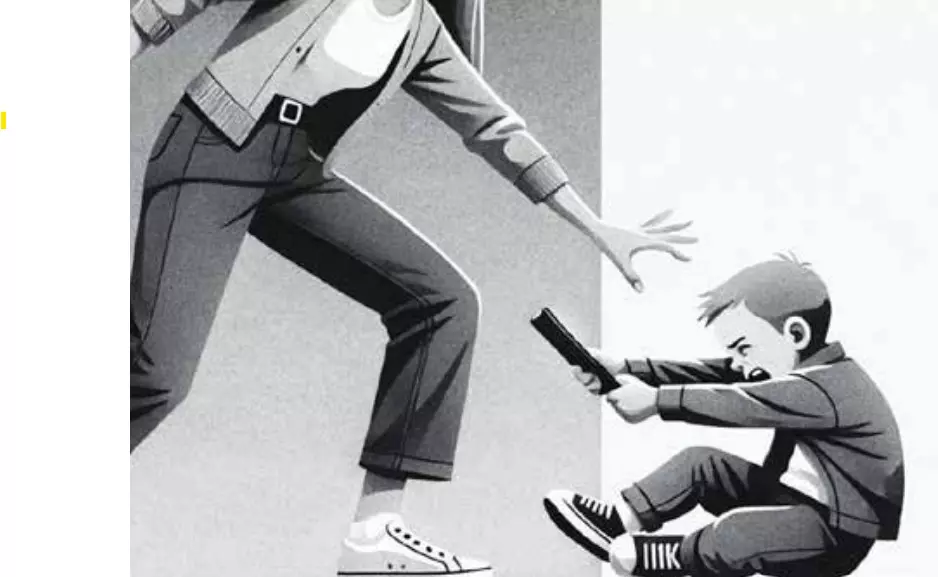Talking Shop: Things going mental
It is distressing that 7.3 per cent of Indians in the 13-17 years age bracket have mental disorders. It’s even more startling that this malaise is worsening in India

“Hard times create strong
men. Strong men create
good times. Good times
create weak men. And weak
men create hard times.”
— Michael Hopf
If we read between the lines in Hopf’s quote, we are witnessing some really good times, at least insofar as the crux of this column goes. This opening line makes me recall the weekend just gone by, when I found myself sitting in the lawns of an august club aka watering hole after a long time, without getting ‘watered’. I was shaken out of my sobriety when the discussion swung the way of Gen Zs. In the heated debate that ensued, of particular pique and concern was an insouciant exchange on the mental health of today’s youngsters.
No one side was speaking ‘for’, while another was ‘against’. Both sides ambivalently agreed that a rot had taken hold. The disagreement was on how far this malaise has spread amongst today’s children and youth, and why they are exhibiting such a runaway propensity for mental fragility, even instability. That got me thinking, reflecting hard. Why is it that today’s ‘haves’ battle such ominous cerebral imbalance, when many previous ‘have-nots’, without access to today’s bells and whistles, have turned out just fine?
I thought of my own childhood in the late 1970s and early 1980s, alongside lakhs of other budding Indians. We had no laptops or Internet, no mobile phones or tablets, no landline telephones or even televisions, no fibre optics and certainly no Artificial Intelligence (AI). Those were times when things were down-to-Earth, uncomplicated and simple, archaic yet genuine, old-school and very analog. The only digital thing we had even heard of were Casio watches, which were an anathema, perhaps because we couldn’t afford them. Today’s generation has it all, and yet most manage to do very little in the real world. Why have things turned out this way? Statistically, how bad are things?
‘Things’ are quite bad
According to the Indian Journal of Medical Research, 7.3 per cent of the youth in the 13-17 years’ age group have mental disorders, even with substance use disorders excluded. Young Indians have a high rate of causing self-harm, with suicide being a leading cause of sudden death. Half of mental illnesses begin by 14 years of age, and three-quarters in the mid-20s.
What are the common distresses? Anxiety; depression; Oppositional Defiant Disorder (ODD); Conduct Disorder (CD); Attention-Deficit/Hyperactivity Disorder (ADHD); Tourette Syndrome; Obsessive-Compulsive Disorder (OCD); Post-traumatic Stress Disorder (PTSD)… There is a war of illness acronyms raging. It may not involve guns, bullets and on-field billets, but a war it is. Look at the ailments above, typically what we see on TV when we watch soaps and thrillers – gunfights and military standoffs, espionage and reconnaissance, double and triple agents, hospitals and shrinks, war veteran haplessness and homeless shelters.
None of that is happening at home to our youngsters, so what gives? Ask that question and even experts fidget, widget and reply that it all boils down to toxic school environments, financial pressures and physical health concerns that primarily stem from non-utilization of muscles, “especially of the grey kind”. The concerns listed above are “playing havoc with our children in their formative years” is the stolid answer.
This answer is a scurrilous one, one that would make many dismiss the new generation as being weaker. Let’s not. We should recognize that each generation has its strengths and weaknesses, and that we need to adapt our expectations and support systems. That begs another question, though – if things are so bad, what are we doing to make it better?
Literally, nothing at all
Strange as it may sound, we are doing previous little to turn the tide. In fact, some parents are even making things worse. We have to remember that youngsters are unorthodox, innovative, quite avant-garde; enfant terribles if you will. They are great at aping adults, and the Internet is awash with videos posted by doting parents. In the parents’ eyes, these are masterpieces of their little ones cooing and cawing while watching their Smartphone and tablet screens. But the statistics are numbing – increasingly, children under 10 years of age are dying of heart attacks if their ‘screens’ are taken away. Those who think that this is only happening in the West better think again.
If cardiac issues seem intense and ultimate, look at studies that reveal that such occurrences are growing fast. ‘Normal’ children who look excessively at colourful screens can barely read even simple texts, often finding it taxing to solve basic math problems. Many ‘normal’ children fall short of even those affected by Dyslexia, Attention Deficit/Hyperactivity Disorder and neurodevelopmental disabilities. Infant girls are worse off, given the rising instances of gender dysphoria, anxiety, depression and self-harm being seen.
Physically, most children today are sedentary, facing the risk of physical and mental ailments early in life. Screen-use has been harmful to neurological development and socialisation, especially as the average urban child spends 5-8 hours online each day. Before Smartphones and screen-heavy devices came, kids spent that same time playing cricket, football, flying kites and whatnot. Not engaging in physical activity, just being glued to the screen, is causing not only muscle atrophy, it is also debilitating emotional capacities and flexibility.
Mentally frail, yet belligerent
Last week, we hired a trainee and asked him to pen a story to gauge his writing skills. The result was out soon, leading us to convey to the boy some of his shortcomings and a path forward. All hell broke loose in the digital world soon after, when this fresh out-of-teens turned whippersnapper. In a terse message, we were told we were not good enough for him, that he had many other ways to make money, that he had joined only to prove a point, and that we should not expect to be blessed with his presence anymore.
Some old hands copied on the message wanted to react, but sleeping dogs were eventually left to lie. But it was a vivid experience for many, an eye-opener on how emotional instability and belligerence can be detrimentally hand-in-glove. To an extent, this column is dedicated to this boy and others like him, with a prayer on the lips that a future is created where full movies are better than this sad short trailer we witnessed on our own home turf.
If we fail to do this and put our Gen Z right, we will not have the right to call ourselves better or more evolved. We would also run the risk of having more people make statements like this boy, or the one made by Charlie Lee when he said: “Truly the worst generation… Stupid children nowadays are nothing like my time. We were more independent. We weren’t weak that we needed to lean on others to make it in this world.”
We need to give everyone a chance. We created this new world. It is up to us to prepare our youngsters to face this world appropriately. If we do that, today’s Gen Z will one day create their own Gen Z, and so on. If we don’t, or fail, we would have only ourselves to blame.
The writer is a veteran journalist and communications specialist. He can be reached on [email protected]. Views expressed are personal



